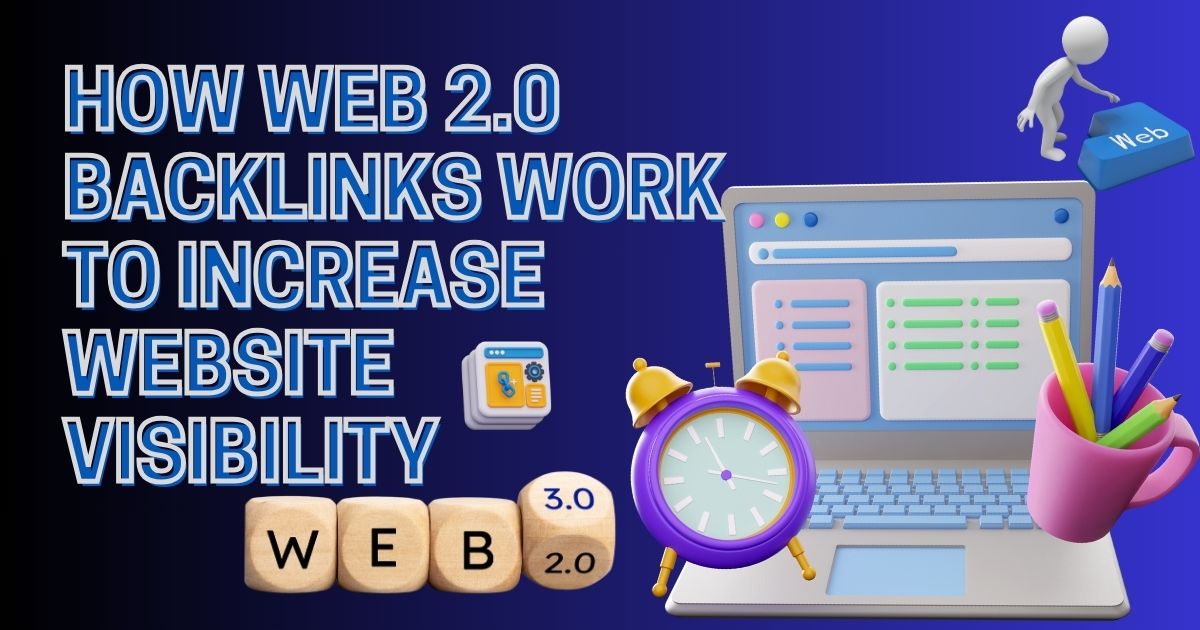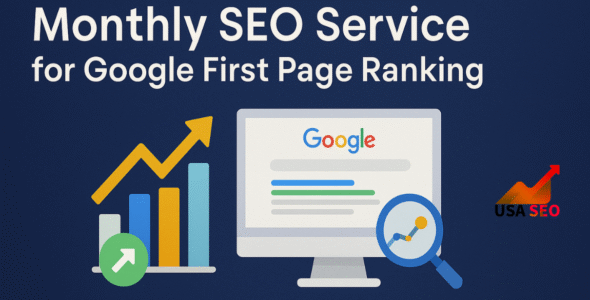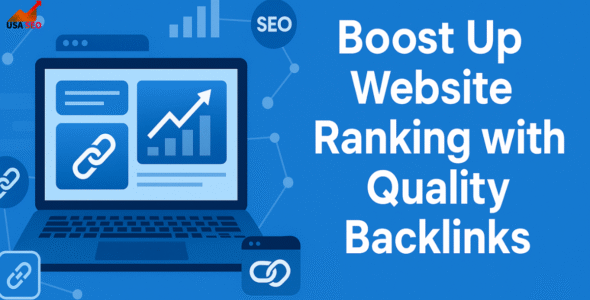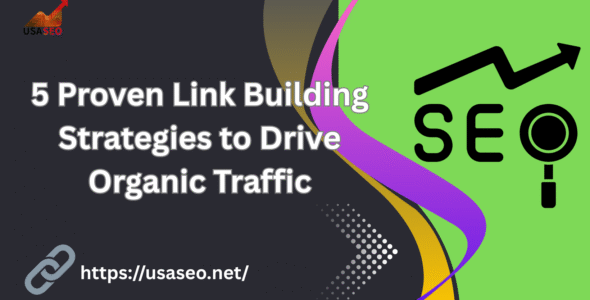Web 2.0 backlinks are a potent SEO tactic that may significantly increase website exposure. These backlinks are made on user-generated platforms such as WordPress, Medium, Blogger, and Tumblr, where content authors may include connections to their websites. The distinctive feature of Web 2.0 backlinks is their high domain authority, which helps increase the linked site’s trustworthiness and rating on search engines. Backlinks may be properly placed into high-quality, keyword-optimized content to improve a website’s relevancy for certain search queries. Web 2.0 backlinks also allow for social involvement and traffic diversification, which improves a website’s overall online presence and exposure across many platforms.
Introduction
In the continuously changing world of digital marketing, website presence is critical. Backlinks are one of the most efficient techniques to increase a website’s exposure in search engine results. Backlinks are external website links that drive viewers to your site, and they are essential for SEO. However, not all backlinks are created equal, and the sort of backlinks you get may significantly affect your site’s rating. One powerful type of backlink is Web 2.0, which are created on user-generated platforms like WordPress, Medium, and Blogger. These platforms allow website owners to build valuable links that improve search engine rankings by leveraging their high domain authority and regular content updates. Using backlinks Web 2.0 can greatly boost your website’s visibility and credibility.
Among the numerous forms of backlinks, Web 2.0 backlinks have proven especially significant in recent years. This article delves into how Web 2.0 backlinks operate to promote website exposure, the distinguishing traits that make them distinct from conventional backlinks, and the best techniques for using them to strengthen your SEO campaigns.

Understanding the role of backlinks in SEO.
Backlinks, sometimes known as “incoming links” or “inbound links,” are simply connections between websites. These connections are one of the key ways that search engines such as Google determine the authority and relevancy of a website. Backlinks are essentially a vote of confidence, telling search engines that other websites value the material enough to link to it.
Backlinks and Search Engine Rankings
Search engines, such as Google, utilize complicated algorithms to rank websites in their search results pages (SERPs). One essential element of these algorithms is backlinks. When a website gains high-quality backlinks from reputable sources, search engines recognize that the material on the site is useful and trustworthy. This, in turn, boosts the website’s rating.
Search engines use various aspects when judging the quality of backlinks:
- Relevancy: Backlinks from websites in the same business or specialty are valued highly since they establish the linked content’s relevancy. Links from high-authority websites, such as recognized news publications or educational institutions, are more credible.
- Anchor Text: The text used in a hyperlink may have an influence on SEO. Well-optimized anchor text with relevant keywords may help your website rank higher for those keywords.
- Diversity: A diversified set of backlinks from various sources is required to build a natural link profile.
Types of Backlinks
Not all backlinks are created equally. Backlinks are often categorized into two categories:
- Natural Backlinks: Links that other websites voluntarily add to your material are known as natural backlinks. Natural backlinks are often acquired via high-quality content or word-of-mouth.
- Manual Backlinks: These are backlinks that you actively get via outreach, collaborations, or other means.
Additionally, backlinks might be do-follow or no-follow. Do-follow links transfer “link juice,” which improves the connected site’s score. No-follow links, on the other hand, do not transfer link juice but may still generate traffic and increase brand awareness.
What Is the Difference Between Web 2.0 Backlinks?
Web 2.0 is the phrase used to define the second generation of the internet, which is distinguished by user-generated content, social networking, and collaboration. Websites such as WordPress, Medium, Tumblr, Weebly, and Blogger allow users to produce and distribute their own material. These sites have grown in importance in the field of SEO since they provide fantastic opportunities for backlinking.
User-generated content.
One of the primary aspects of backlinks on web 2.0 platforms is the ability for users to create their content. Unlike conventional websites, which are usually static and developed by a limited number of people, Web 2.0 sites enable users to publish blogs, profiles, videos, and other types of content. This user-generated material is often indexed by search engines, making it an excellent source of links.
Web 2.0 backlinks are seen as more useful since they originate from platforms that are often updated with new material. These sites have a high domain authority and trust factor, which might help the SEO of any website that is connected to by them.
Link Building using Web 2.0 Properties
Users on Web 2.0 platforms may establish their own pages or profiles and insert hyperlinks to other sites inside their material. Links to other websites may simply be included in a WordPress blog post or a Medium user profile. These links, when properly placed, may attract targeted visitors to your website and boost its search engine results.
One of the primary benefits of Web 2.0 backlinks is that they provide you more control over the content and placement of the hyperlinks. You may choose the anchor text, insert the link into appropriate material, and optimize it for SEO.
Content Control and Customization
Unlike backlinks from third-party websites, which give you limited control over the context in which the link appears, Web 2.0 backlinks enable you to generate content that is directly connected to your target keywords. This provides you a huge edge in terms of search engine optimization. You may boost your chances of ranking for such phrases by ensuring that your content is relevant, well-written, and includes the appropriate keywords.
Web 2.0 platforms also include customization options, which may improve the effectiveness of backlinks. For example, you may create customizable themes for your Web 2.0 sites, including multimedia features such as movies and photographs, and even optimize your content for mobile visitors. This amount of adaptability makes Web 2.0 backlinks an effective tool in any link-building plan.
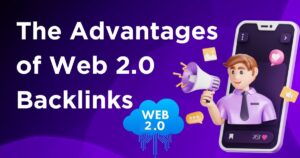
The Advantages of Web 2.0 Backlinks
Increased website visibility.
One of the key advantages of Web 2.0 backlinks is the capacity to boost website visibility. When you develop a Web 2.0 property and connect back to your website, you are effectively creating another online presence that may generate visitors. Furthermore, search engines like Google index the information on these sites, increasing the likelihood that it will appear in search results.
By carefully posting Web 2.0 backlinks on high-authority sites, you may increase your site’s exposure in search engine results for a wide range of keywords. This is particularly useful for long-tail keywords or specialty themes, which are difficult to rank using regular backlinks.
Traffic Diversification
Web 2.0 backlinks are also an effective way to diversify your traffic sources. If your website is entirely dependent on organic search traffic, it may be jeopardized if search engine algorithms change unexpectedly. However, by creating backlinks from various Web 2.0 sites, you may get referral traffic in addition to organic traffic. This variety ensures that your website continues to draw visitors even when search engine results fluctuate.
Web 2.0 platforms are recognized as trustworthy and authoritative sources by search engines. Backlinks from these networks might help enhance your website’s domain authority. Over time, this enhances your overall SEO performance, making it simpler to rank for competitive keywords and move up in search results.
Search engines also realize that Web 2.0 platforms include a large amount of user-generated material, which is often fresh and updated. The steady flow of fresh information enhances the legitimacy of these platforms, and backlinks from them are highly prized.
Increased social proof and engagement.
Web 2.0 backlinks provide the potential for higher social proof. When you publish material on Web 2.0 platforms, you may get comments, shares, and other types of interaction. This involvement communicates to consumers and search engines that your material is important and relevant. As a consequence, Web 2.0 backlinks may assist in generating social proof, boosting your website’s reputation, and encouraging more visitors to come.
How to Build Web 2.0 Backlinks Effectively
Building Web 2.0 backlinks may be time-consuming, but with the appropriate plan, it can have a significant impact on your SEO efforts.
Identifying high-quality web 2.0 platforms.
Not all Web 2.0 platforms provide comparable SEO advantages. Some are more authoritative, while others have greater levels of participation. To develop successful Web 2.0 backlinks, prioritize high-quality sites with high domain authority. Examples of such platforms are:
WordPress.com Medium.
- WordPress.com
- Medium
- Blogger
- Weebly
- Tumblr
Before utilizing any platform to create backlinks, be sure to examine its domain authority, traffic, and relevancy.
Creating compelling content for backlinks.
Simply adding backlinks on a Web 2.0 platform is insufficient. You must build high-quality, interesting content that will organically generate backlinks. Write blog entries, articles, or product reviews that are useful to readers. Make sure your material is well-researched, relevant, and optimized for search engines. By focusing on creating valuable content, you not only enhance the user experience but also increase the chances of earning backlinks to Web 2.0 naturally.
These high-quality, content-driven backlinks are more likely to improve your site’s SEO by driving organic traffic and signaling relevance to search engines. Optimizing your backlinks Web 2.0 within well-crafted, engaging content is key to achieving long-term SEO success. By offering relevant material that answers users’ queries or solves issues, you enhance the possibility that people will link back to your Web 2.0 page, thus increasing your website’s exposure.
Avoiding Common Mistakes in Web 2.0 Backlinking
While Web 2.0 backlinks may be quite powerful, it’s crucial to avoid these typical pitfalls:
- Over-Optimization: Avoid employing too many keywords or shoving them into your article. Search engine penalties might follow from this.
- Spamming: Never spam Web 2.0 sites with irrelevant or low-quality links. Concentrate on delivering value to your audience.
- Lack of material Variety: Avoid relying on a single platform or kind of material. Diversify your Web 2.0 backlinking approach to prevent seeming strange to search engines.
Monitoring and analyzing backlink performance.
After you’ve created Web 2.0 backlinks, you should routinely analyze their performance. Use SEO tools like Google Analytics, Ahrefs, or SEMrush to monitor the traffic, rankings, and backlinks to your Web 2.0 sites. This will allow you to determine which platforms and content kinds are bringing the most traffic and which may need changes.

Best Practices to Maintain Web 2.0 Backlink Quality
Maintaining the quality of your Web 2.0 backlinks is as vital as creating them. Here are some excellent practices for making sure your backlinks continue to provide value:
Consistency in content creation
Web 2.0 systems thrive on new content. To keep your backlinks fresh and important, update your Web 2.0 assets regularly with new blog entries, articles, and other material. Consistency in content production can assist in keeping your backlinks effective and guarantee that search engines continue to see your sites as authoritative sources. By consistently adding value through new content, you enhance the impact of backlinks Web 2.0 and help maintain their relevance. Regular updates signal to search engines that your Web 2.0 properties are active and authoritative, ultimately improving your site’s visibility and ranking. This ongoing content strategy ensures that backlinks Web 2.0 continues to contribute positively to your SEO efforts.
Link Diversity.
Web 2.0 backlinks are important, but they should not be the only sort of backlinks you create. It’s critical to vary your backlink profile by gaining connections from a range of sources, such as guest posts, directories, and social media. A natural blend of various forms of backlinks can increase your website’s SEO while also protecting it from possible penalties.
Disavowing Toxic Backlinks
Over time, some of your Web 2.0 backlinks may become poisonous or spammy, undermining your SEO efforts. Regularly analyze your backlink profile and remove any low-quality or irrelevant links. Google’s Disavow tool may help you delete undesirable backlinks while still maintaining the quality of your link profile.
Maintaining Compliance with SEO Guidelines
Always check that your Web 2.0 backlinking tactics follow Google’s Webmaster Guidelines. Avoid black-hat practices such as link farming and purchased links. Stick to ethical SEO tactics to keep your website’s rankings consistent over time.

Conclusion
Web 2.0 backlinks are an effective method for improving website exposure and SEO efforts. These backlinks provide a unique mix of content management, authority, and interaction, which may dramatically boost a website’s search engine rating. You may increase your website’s exposure and attract more targeted visitors by knowing the importance of backlinks in SEO, producing high-quality content, and adhering to best practices for building and maintaining Web 2.0 backlinks.
Remember, Web 2.0 backlinks are just one part of the SEO equation. A comprehensive strategy to link development, content production, and optimization is critical for long-term success in the competitive digital marketplace.
 My Account
My Account 